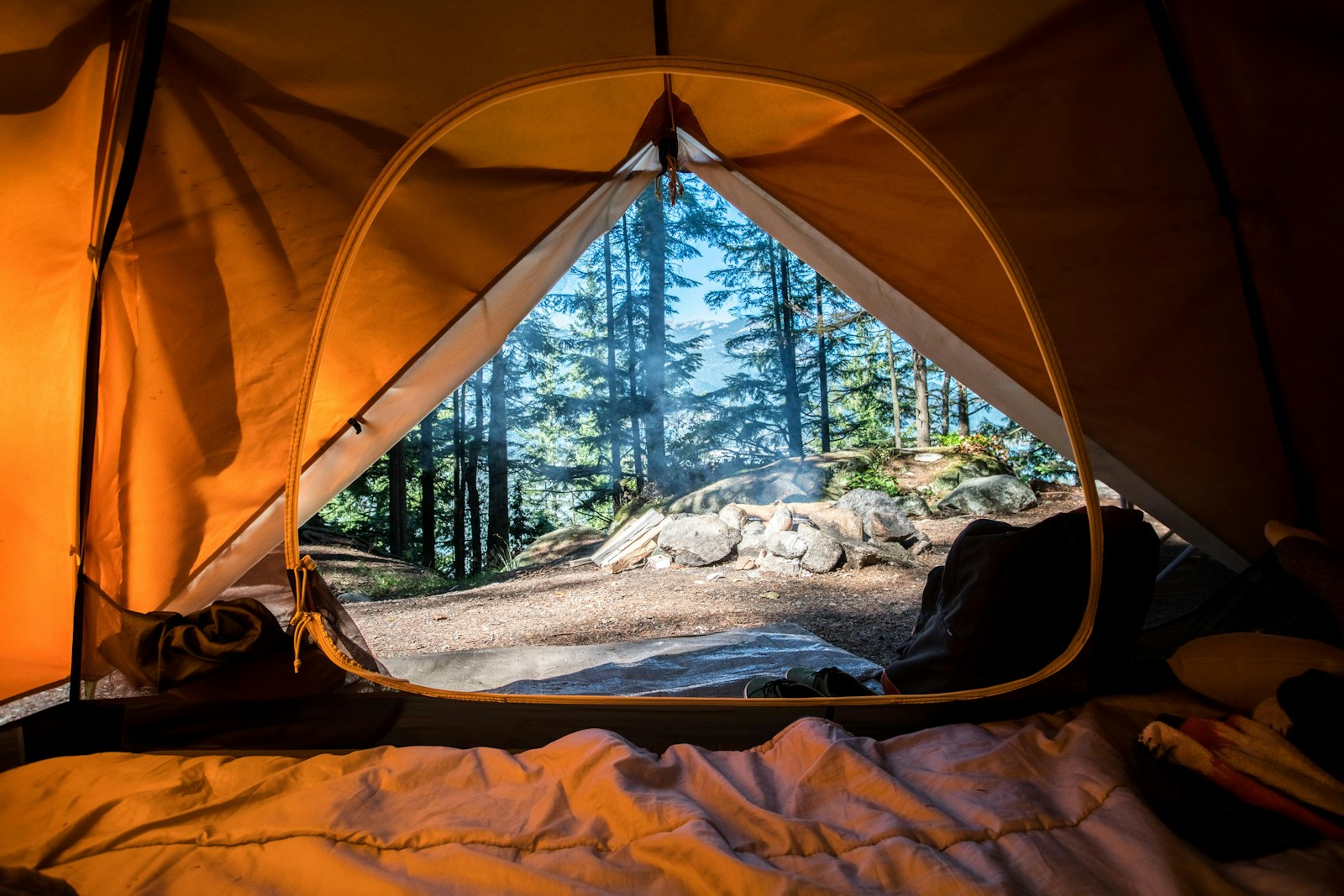Imagine embarking on a camping trip filled with delicious and budget-friendly meals. In this article, we will explore the art of meal planning and cooking while camping, ensuring that you can enjoy tasty and economical dishes throughout your outdoor adventure. From smart ingredient choices to efficient cooking techniques, we will equip you with the knowledge to create flavorful meals that won’t break the bank. So, grab your camping stove and let’s discover the secrets of economical camping meals together!

Meal Planning And Cooking
When it comes to camping, meal planning is an essential aspect that can make or break your outdoor adventure. By carefully considering the length of your camping trip, determining the number of meals needed, making a list of essential ingredients, planning meals that use similar ingredients, and considering the ease of preparation, you can ensure that your camping meals are not only delicious but also convenient.
Consider the length of your camping trip
The first step in meal planning for your camping adventure is to think about the length of your trip. Are you embarking on a weekend getaway or an extended vacation? Understanding the duration of your camping trip will help you determine the amount of food and ingredients you need to pack.
For shorter trips, it may be easier to plan and prepare individual meals for each day. However, for longer trips, you might want to consider bulk cooking and freezing some meals to save time and effort.
Determine the number of meals needed
Once you have an idea of how long you will be camping, it’s important to determine the number of meals you will need to prepare. This will depend on the number of people in your camping group and how many times a day you plan to eat.
Consider breakfast, lunch, dinner, and snacks when calculating the number of meals required. Don’t forget to account for any special dietary needs or preferences among your camping companions.
Make a list of essential ingredients
Creating a comprehensive list of essential ingredients is key to successful meal planning for camping. Take into consideration the types of meals you want to prepare and the specific ingredients required for each dish.
Having a well-organized shopping list will not only ensure that you don’t forget any essential items but also help you avoid overpacking unnecessary ingredients.
Plan meals that use similar ingredients
To streamline your meal planning process and minimize waste, try to plan meals that use similar ingredients. For example, if you’re planning to make chili one night, consider using some of the same ingredients, such as onions, beans, and ground meat, for a taco salad or nachos on another night.
This approach not only saves you money but also reduces the number of ingredients you need to pack and the risk of perishable items going bad before they are used.
Consider the ease of preparation
While camping, you want to focus on enjoying the great outdoors rather than spending excessive time preparing complicated meals. When meal planning, consider the ease of preparation for each dish.
Opt for meals that can be easily cooked on a camp stove or over a campfire. Simple recipes that require minimal prep work and cook in one pot or skillet are ideal for camping. This way, you’ll spend less time cooking and more time exploring and relaxing.
Budget-Friendly Ingredients
Camping doesn’t have to be expensive, especially when it comes to meal preparation. By choosing budget-friendly ingredients, you can stick to a tight budget without compromising on taste or nutrition.
Choose inexpensive protein sources
Protein is an essential component of any balanced meal, but it can also be one of the more expensive ingredients. When camping on a budget, consider opting for inexpensive protein sources such as canned tuna, canned beans, or dried lentils.
Not only are these options affordable, but they also have a long shelf life, making them perfect for camping trips. If you’re a meat-lover, consider buying cheaper cuts of meat or marinating and freezing them before your trip.
Opt for canned and dried goods
Canned and dried goods are versatile and cost-effective options for camping meals. Items like canned vegetables, canned soups, and dried fruits can be stored easily without the need for refrigeration.
Additionally, these items often have a long shelf life, so you can stock up on them when they are on sale or in bulk, helping you save money in the long run.
Include staple foods
Staple foods such as rice, pasta, and potatoes are not only affordable but also provide a solid base for many camping meals. These versatile ingredients can be paired with various proteins, vegetables, and spices to create satisfying and budget-friendly dishes.
Consider buying these staple foods in bulk before your camping trip, as they tend to be less expensive when purchased in larger quantities.
Emphasize non-perishable items
To avoid food spoilage and waste, prioritize non-perishable items when meal planning for camping. Non-perishable items include canned goods, dried foods, and items that don’t require refrigeration.
By relying on non-perishable items, you won’t have to worry about food going bad, even if you’re camping in a location without access to refrigeration or electricity.
Utilize local and seasonal produce
If you’re camping in an area with access to local markets or farms, consider utilizing local and seasonal produce in your meal planning. Not only will this support local businesses, but it can also save you money.
Local and seasonal produce is often more affordable than imported or out-of-season fruits and vegetables. Additionally, it tends to be fresher and more flavorful, enhancing the overall taste of your camping meals.
One-Pot Meals
One-pot meals are a camper’s best friend. They are not only convenient but also minimize the number of dishes you need to clean. Here, we’ll explore the benefits of one-pot meals, share some recipe ideas, and provide tips for efficient cooking and clean-up.
Benefits of one-pot meals
One-pot meals offer several advantages when it comes to camping cooking. First and foremost, they require minimal equipment, making them perfect for outdoor cooking. All you need is a pot or skillet, and you’re good to go.
Another benefit is that one-pot meals are usually easy to prepare, making them suitable for campers of all cooking skill levels. You can simply throw all the ingredients into one pot and let them cook together, allowing flavors to meld and creating a delicious meal with minimal effort.
One-pot meals also save you time and energy, as they usually involve shorter cooking and clean-up times compared to preparing multiple dishes. This means more time to relax around the campfire or engage in outdoor activities.
Recipe ideas for one-pot camping meals
When it comes to one-pot camping meals, the possibilities are endless. Here are a few ideas to get you started:
Campfire Chili
Ingredients:
- Ground beef or turkey
- Onion, diced
- Bell pepper, diced
- Canned beans (kidney, black, or pinto)
- Canned diced tomatoes
- Tomato paste
- Chili powder
- Garlic powder
- Salt and pepper to taste
Instructions:
- Heat a pot or Dutch oven over the campfire or camp stove.
- Brown the ground beef or turkey with the diced onion and bell pepper.
- Drain any excess fat.
- Add all the remaining ingredients to the pot and stir well.
- Cover the pot and allow the chili to simmer for 30-45 minutes, stirring occasionally.
- Serve hot with optional toppings such as shredded cheese, sour cream, and chopped cilantro.
One-Pot Pasta Primavera
Ingredients:
- Pasta of your choice (spaghetti, penne, or rotini)
- Olive oil
- Garlic cloves, minced
- Assorted vegetables (bell pepper, zucchini, cherry tomatoes, etc.), diced
- Vegetable or chicken broth
- Grated Parmesan cheese
- Salt and pepper to taste
- Fresh basil or parsley for garnish
Instructions:
- Heat a pot or skillet over the campfire or camp stove.
- Add olive oil and minced garlic to the pot and sautee until fragrant.
- Add the diced vegetables and cook until slightly softened.
- Add the pasta and broth to the pot, ensuring that the liquid covers the pasta.
- Bring the mixture to a boil, then reduce heat and let it simmer until the pasta is cooked and the liquid is absorbed.
- Remove from heat and stir in grated Parmesan cheese.
- Season with salt and pepper to taste.
- Garnish with fresh basil or parsley before serving.
Tips for efficient cooking and clean-up
To make your one-pot cooking experience even more convenient, here are some tips for efficient cooking and clean-up:
- Prep ingredients in advance: Before leaving for your camping trip, chop vegetables, measure out spices, and pre-cook any proteins that may require longer cooking times.
- Use resealable bags for pre-measured ingredients: To save space and minimize cooking time, pre-measure dry ingredients and store them in resealable bags. This will allow you to simply dump the ingredients into the pot when it’s time to cook.
- Clean as you go: While cooking, try to wash and dry utensils, cutting boards, and other cooking tools as you finish using them. This will prevent a pile-up of dirty dishes and make clean-up easier.
- Bring biodegradable dish soap: For environmentally-friendly campers, opt for biodegradable dish soap that won’t harm the environment when you wash your dishes at the campsite.
- Utilize foil packets: For certain meals, like foil-wrapped fish or vegetable packets, you can skip the pot altogether. Simply wrap the ingredients in heavy-duty foil and place them directly on the campfire or grill for a quick and easy meal with minimal clean-up.
By following these tips and exploring different one-pot recipes, you can make camping cooking a breeze while still enjoying delicious meals.



Leave a Reply